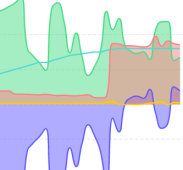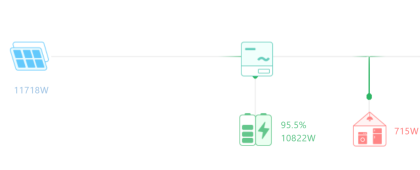SunFarmer
New Member
This is long-ish, please bear with me. Thank you.
Has anyone ever tried using the grid back-feed, or grid-export functionality in an inverter to power a dump load?
First some background, then I’ll explain my idea.
I built an off-grid solar power system using an EG4 6000EX inverter. I now have two months of experience living with the system and I come to realize that I’m leaving a lot of untapped power on the table, even in winter. Many days my 25-kWh battery bank is fully charged my mid-day, then the panels are idle for the rest of the day. Therefore, I’m exploring way to harvest more of the available power.
I’ll probably never be able to sell power to the grid, although wish I could. My local utility requires an electrical permit and passed electrical inspection. This is a DIY system so I have neither. Also, my EG4 6000EX inverter is not certified in the USA for grid-tie.
In month or two, when budget allows, I’m upgrading our domestic water heater to Rheem Performance Platinum Hybrid heat-pump water heater, and of course run it with solar electric. This alone will help me harvest more solar power. Then I want to use my old electric water heater for a dump load.
The inverter has ac input and ac output. The ac output is connected to an off-grid sub panel for critical loads. The ac input is connected to my main panel for backup power via the inverter’s built-in ATS. If I could export power to the grid, the juice would go out via the ac input line.
Here's my idea: I'm thinking of disconnecting the ac input from the main panel and connecting it to the old water heater. Then enabling the forbidden solar energy back-feed to grid setting (program #9). I have a manual method to fail-over to the grid if there is more than 2-3 days of clouds. And as mentioned, I can’t sell power to the electric company, consequently I’m okay with disconnecting the AC input.
I have the inverter output source priority set to Solar/Battery/Utility, where solar first powers the loads, then charges the battery, and whatever is leftover is sent it to the utility. So, I’m thinking that when the battery is fully charged, the inverter should “export” power to the water heater. The switch over to dump load would be handled by the inverter without the need for any external relays or other equipment.
Anybody ever tried this?
I’m first going to experiment with small load connected to the ac input to see if it works.
Thanks in advance for everyone’s sage advice.
Has anyone ever tried using the grid back-feed, or grid-export functionality in an inverter to power a dump load?
First some background, then I’ll explain my idea.
I built an off-grid solar power system using an EG4 6000EX inverter. I now have two months of experience living with the system and I come to realize that I’m leaving a lot of untapped power on the table, even in winter. Many days my 25-kWh battery bank is fully charged my mid-day, then the panels are idle for the rest of the day. Therefore, I’m exploring way to harvest more of the available power.
I’ll probably never be able to sell power to the grid, although wish I could. My local utility requires an electrical permit and passed electrical inspection. This is a DIY system so I have neither. Also, my EG4 6000EX inverter is not certified in the USA for grid-tie.
In month or two, when budget allows, I’m upgrading our domestic water heater to Rheem Performance Platinum Hybrid heat-pump water heater, and of course run it with solar electric. This alone will help me harvest more solar power. Then I want to use my old electric water heater for a dump load.
The inverter has ac input and ac output. The ac output is connected to an off-grid sub panel for critical loads. The ac input is connected to my main panel for backup power via the inverter’s built-in ATS. If I could export power to the grid, the juice would go out via the ac input line.
Here's my idea: I'm thinking of disconnecting the ac input from the main panel and connecting it to the old water heater. Then enabling the forbidden solar energy back-feed to grid setting (program #9). I have a manual method to fail-over to the grid if there is more than 2-3 days of clouds. And as mentioned, I can’t sell power to the electric company, consequently I’m okay with disconnecting the AC input.
I have the inverter output source priority set to Solar/Battery/Utility, where solar first powers the loads, then charges the battery, and whatever is leftover is sent it to the utility. So, I’m thinking that when the battery is fully charged, the inverter should “export” power to the water heater. The switch over to dump load would be handled by the inverter without the need for any external relays or other equipment.
Anybody ever tried this?
I’m first going to experiment with small load connected to the ac input to see if it works.
Thanks in advance for everyone’s sage advice.





